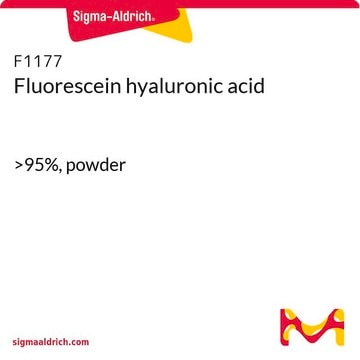Kluczowe dokumenty
H6024
Hoechst Stain solution
Synonim(y):
Bisbenzimide H 33258
About This Item
Polecane produkty
Formularz
solution
Zastosowanie
histology
temp. przechowywania
2-8°C
ciąg SMILES
O.Cl.Cl.Cl.CN1CCN(CC1)c2ccc3NC(=NCc3c2)c4ccc5NC(=NCc5c4)c6ccc(O)cc6
InChI
1S/C27H28N6O.3ClH.H2O/c1-32-10-12-33(13-11-32)22-5-9-25-21(15-22)17-29-27(31-25)19-4-8-24-20(14-19)16-28-26(30-24)18-2-6-23(34)7-3-18;;;;/h2-9,14-15,34H,10-13,16-17H2,1H3,(H,28,30)(H,29,31);3*1H;1H2
Klucz InChI
OWRSPPSBNWJJAR-UHFFFAOYSA-N
Opis ogólny
Zastosowanie
Komponenty
Kod klasy składowania
10 - Combustible liquids
Klasa zagrożenia wodnego (WGK)
WGK 1
Temperatura zapłonu (°F)
Not applicable
Temperatura zapłonu (°C)
Not applicable
Wybierz jedną z najnowszych wersji:
Masz już ten produkt?
Dokumenty związane z niedawno zakupionymi produktami zostały zamieszczone w Bibliotece dokumentów.
Klienci oglądali również te produkty
Active Filters
Nasz zespół naukowców ma doświadczenie we wszystkich obszarach badań, w tym w naukach przyrodniczych, materiałoznawstwie, syntezie chemicznej, chromatografii, analityce i wielu innych dziedzinach.
Skontaktuj się z zespołem ds. pomocy technicznej









